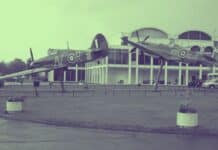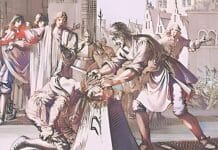Ripperologist TREVOR BOND reveals some lesser known Jack the Ripper locations you won’t see on your standard tour…
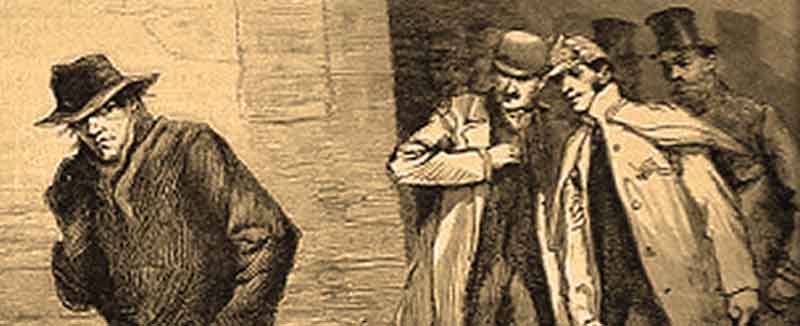
London, England. Every night of the year, hundreds of people descend on the areas of Whitechapel, Spitalfields, and Aldgate, eager to hear about the crimes, victims, and historic times of ‘Jack the Ripper’.
The unidentified serial killer, responsible for a generally accepted five murders within 10 weeks in and around Whitechapel during 1888 (sometimes known as the ‘canonical five’ victims), has become a cornerstone of English folklore over the past 130 years, even whilst the crimes remain very much real and despicable.
The route of most tours is well established by now – the Ten Bells pub and Christ Church Spitalfields, Hanbury Street and what was once Dorset Street, the former Frying Pan public house and the Wentworth Street archway, etcetera. But what if you have seen all the sites on a ‘Ripper’ tour and you still want more?
Here are 13 other locations related to the story of the ‘autumn of terror’…
1. Durward Street – Site of the murder of Mary Ann ‘Polly’ Nichols, discovered at 3.45am, 31st August 1888
The first murder commonly attributed to the single unnamed individual known as ‘Jack the Ripper’ is that of 43-year-old Mary Ann Nichols who was discovered by two men on the way to work (although, Ripperology being what it is, one of them has since been proposed as a suspect for the murder itself) on the morning of 31st August 1888.
Her body lay at the side of the road in Bucks Row, now known as Durward Street, with her throat cut in two places and, it would later transpire, a large abdominal wound which exposed her bowels.
The only building remaining in the street from 1888 is the large brown and red former board school, which has now been converted into housing.
Nichols’ body was discovered outside the gates of Brown’s Stable Yard, a short distance east of the school.
For many years the site was identifiable as a car parking space outside a modern flat, but currently stands behind a frustrating but doubtless entirely necessary security barrier guarding the ongoing Crossrail construction site.
2. Henriques Street – Site of the murder of Elizabeth Stride, discovered at 1:00am, 30th September 1888
Another street which has changed its name since 1888 is the former Berner Street, rechristened in 1962 in honour of then recently deceased philanthropist Basil Henriques.
It was in a passage leading from this street that, back in 1888, the body of 44-year-old Elizabeth Stride was found.
The exact location of the discovery now lies within the car park of the Harry Gosling Primary School.
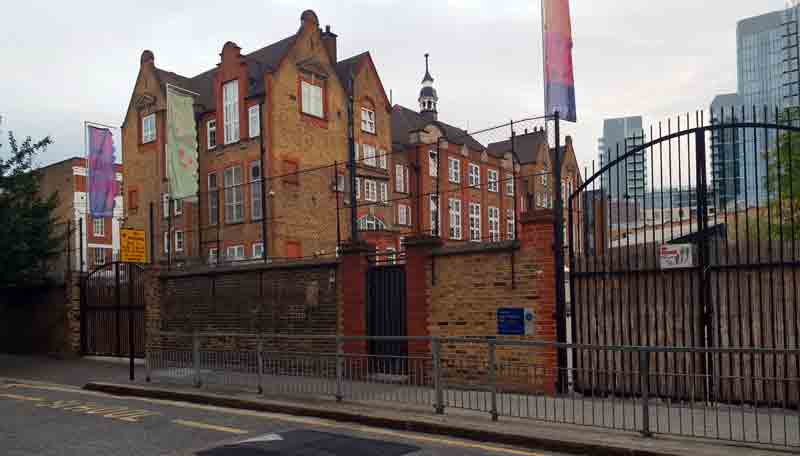
The southernmost of the school’s three large, curved gates marks what was once the entrance into Dutfield’s Yard, previously home to the International Working Men’s Educational Club, whose steward Louis Diemshutz tried to turn his pony into the yard at 1am on 30th September 1888, only to find the animal refuse to walk on.
When Diemshutz and his colleagues investigated, they found Stride’s body, with her throat cut but having suffered no other mutilations, a fact which has caused lively debate ever since.
3. Alderney Road – Home to George Lusk, Chairman of the Whitechapel Vigilance Committee
Almost as soon as the ‘Ripper’ murders began, news – and anger – began to spread rapidly.
In Whitechapel and beyond the public were in a state of alarm and the police, or so a number of the populace believed, were either incompetent, uninterested, or both.
One possible solution was the formation of ‘vigilance committees’, groups of local men who banded together in an effort to protect their local streets themselves.
On 10th September 1888, a builder from Mile End named George Lusk was elected as chairman of the newly formed Whitechapel Vigilance Committee, also sometimes styled as the Whitechapel and Mile End Vigilance Committee, who set out to do just that.
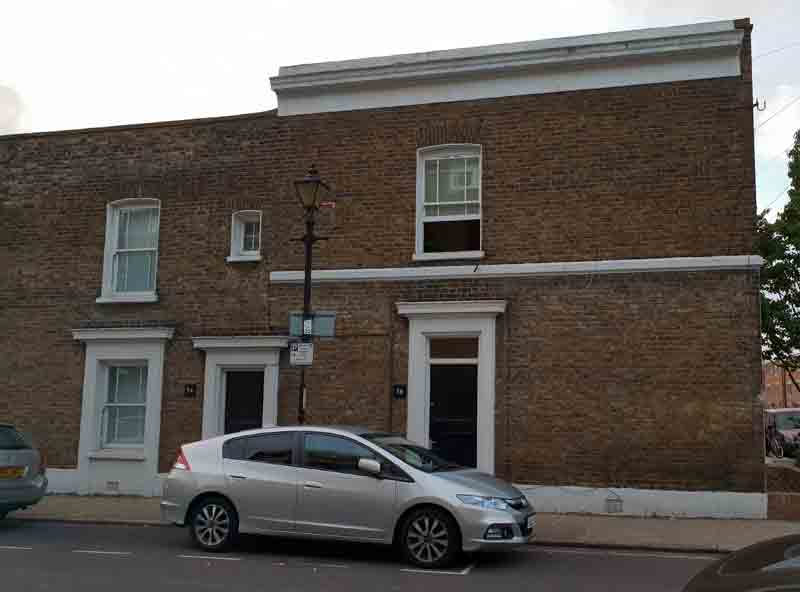
On 16th October 1888, Lusk came to wider attention when he received, at his home address, a parcel and accompanying letter.
The sender, who claimed to be the man responsible for the recent murders, wrote with a seemingly deliberate attempt to appear almost illiterate, and left Lusk in no doubt as to what the parcel contained. ‘I send you half the kidne I took from one woman prasarved it for you’, it began. ‘Tother half I fried and ate it was very nise’.
The parcel did indeed contain a portion of kidney, which Dr Thomas Openshaw of the London Hospital later declared was human.
The letter itself ended mockingly – ‘catch me when you can Mishter Lusk’.
Today, the former home of ‘Mishter Lusk’ stands on the corner of Alderney Road and Tollet Street.
His front door, through which the grisly parcel was delivered, would have opened onto Alderney Road.
4. Victims’ Graves – City of London Cemetery/ Manor Park Cemetery/ East London Cemetery/ St. Patrick’s Roman Catholic Cemetery
It is very much a matter of personal taste but a number of people interested in the ‘Jack the Ripper’ story find that they are drawn to visit the graves of the killer’s victims, in order to pay their respects, whether in the form of quiet contemplation or the laying of flowers or trinkets.
A word of caution, however.
Whilst some of these women did have family able to pay for their burial expenses (Mary Ann Nichols’ funeral, for example, was paid for by jointly by her father, ex-husband, and eldest son, although it is said that the latter two refused to speak to each other during the service), others such as Mary Kelly did not, and were instead buried in ‘pauper’s graves’, and the siting of their modern-day memorials are often best described as approximate at best.
Both Mary Ann Nichols and Catherine Eddowes were laid to rest at the City of London Cemetery, in Manor Park, whilst the final resting place of Annie Chapman is also nearby, at Manor Park Cemetery, Forest Gate.
Eizabeth Stride was buried in the East London Cemetery, in Plaistow, whilst the grave of the only Catholic ‘canonical’ victim, Mary Kelly, lies in St Patrick’s Roman Catholic Cemetery, Leytonstone.
Also buried in this particular cemetery are John McCarthy, Mary Kelly’s landlord at the time of her death, and on an unrelated but interesting note also Timothy Evans, wrongly convicted of and executed for the murders of his wife and daughter in 1950, crimes it was only later revealed were actually committed by his own landlord at the time, John Reginald Christie, famously portrayed to chilling effect by Richard Attenborough in the film ‘10 Rillington Place’.
You can read more about the victim’s graves and see pictures of them here.
5. New Bridge Street – Former offices of the Central News Agency
The name ‘Jack the Ripper’ is today instantly recognisable.
However, for the first four weeks of the so-called ‘autumn of terror’ the mysterious culprit was instead referred to under numerous other, largely forgotten, monikers such as the ‘East End Menace’ and the ‘Noiseless Midnight Terror’.
The infamous name actually began on 27th September 1888, when a letter was delivered to the Central News Agency, an organisation best understood as the precursor to modern companies such as Reuters.
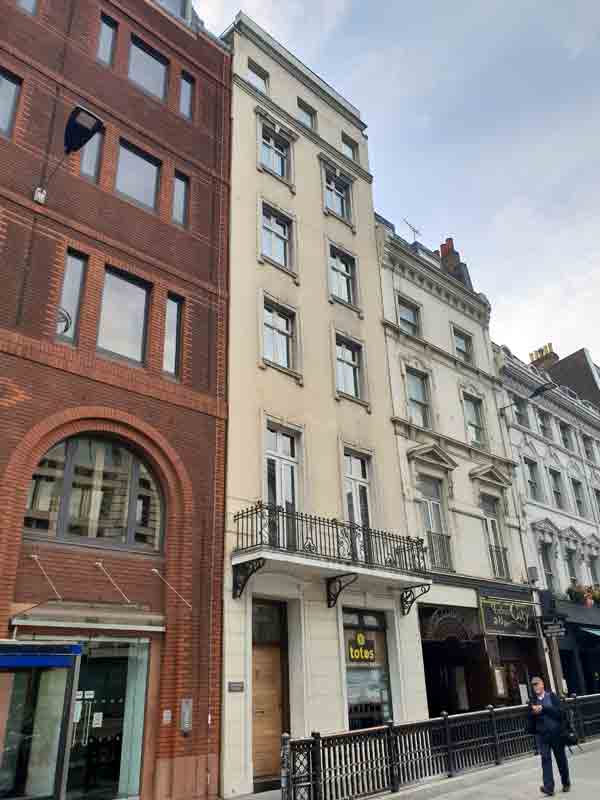
Addressed to the boss of the agency, the letter which was eventually passed on to the police has become known as the ‘Dear Boss’ letter. ‘I’m down on whores’, the author declared, ‘and I shan’t quite ripping them til I do get buckled’.
The letter was signed, for the first time but not the last, ‘Jack the Ripper’. ‘Don’t mind me giving the tradename’, it ended.
Today, many people believe that the letter was a hoax. Nevertheless, it birthed a name that has lasted for over a century.
The building which formerly housed the Central News Agency’s offices still stands at 5 New Bridge Street, close to Blackfriars underground station.
6. Pinchin Street – Site of the discovery of the ‘Pinchin Street Torso’ at 5:25am, 10th September 1889
Between April 1888 and February 1891, the authorities collected details on no less than 11 murders of women (although no less a personage than Dr Robert Anderson, the Assistant Commissioner of the Metropolitan Police’s CID at the time, was adamant that one of the cases was actually a suicide) in and around Whitechapel, in what has become known as the ‘Whitechapel Murder File’.
All of the ‘canonical’ Jack the Ripper victims can be found there, along with most of the other incidents which are sometimes argued for inclusion.
One in particular bears mentioning, and although it is rarely considered as a ‘Ripper’ crime it did occur in the same area a little under a year from the last ‘canonical’ killing, and it is a fascinating, if inevitably grim, tale in its own right.
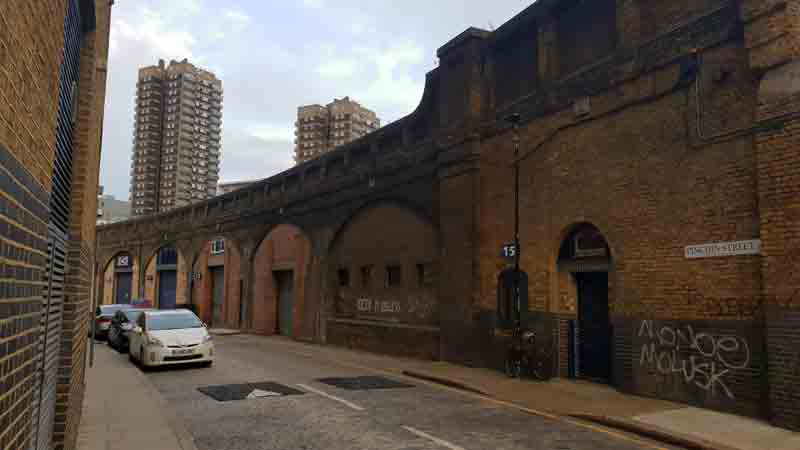
At 5.25am on 10th September, 1889, a policeman was passing along Pinchin Street when he made a gruesome discovery – what he had at first taken for a parcel, lying in the entrance to a railway arch, was in fact the headless, legless body of a woman.
It must have been as much of a surprise to him as it also was to the three men, sleeping in nearby arches, who were soon awoken, questioned, and in fact arrested on suspicion of involvement in the deed, although all three were later released without charge.
Although at least one American publication claimed to have identified the woman, they were proved to be mistaken, and her true identity has never been discovered, and nor was that of her murderer.
If the crime was linked to the ‘Ripper’ murders, then it would appear that the killer had radically changed his methods of both murder and disposal.
Alternatively, it may have been linked to the concurrent series of ‘Thames Torso Murders’, but that is a story for another day.
The crucial archway, now bricked up, remains in Pinchin Street, being the furthest westwards, on the south side of the street.
Another ‘Whitechapel Murder File’ crime, and one more often argued as a potential ‘Ripper’ murder, that of Frances Coles, also took place nearby in 1891, in Swallow Gardens, a passageway, between two more railway arches, which once linked Chamber Street to Royal Mint Street.
7. Old Jewry – Former headquarters of the City of London Police
Although four of the five ‘canonical’ murders were investigated by the Metropolitan Police, who had been responsible for policing much of London since 1829, there were two police forces involved in the murder series – the other being the City of London Police, who then, as now, were the authority in charge of the ancient trading centre known as the City – the ‘square mile’ to use the almost geographically correct parlance.
It was a City policeman who discovered the body of Catherine Eddowes, the second victim on the night of the ‘double event’ (September 30th).
The discovery was made only 45 minutes after that of Elizabeth Stride over the border into ‘Met’ territory, and indeed only 45 minutes after Eddowes herself had been released from City police custody following an earlier arrest for being drunk and disorderly.
It was also the City police who would argue their case later that morning – eager to preserve, at least temporarily, mysterious chalk writing which was found on a wall nearby (although, crucially, not in their jurisdiction).
The City lost the argument, with the Metropolitan Police particularly concerned about the potential to provoke rioting should the writing be observed by the general population.
The Victorian-era headquarters of the City of London Police, from where at least part of the investigation into the ‘autumn of terror’ would therefore have been conducted, can today he glimpsed through gates in Old Jewry, close to Bank underground station.
8. Batty Street – Site of Mrs Kuer’s lodging house
‘The Lodger’ may not be one of the most famous ‘Ripper’ suspects, but, whoever he was, he may just be the one who can boast the greatest impact on the history of British cinema, forming the basis behind both Alfred Hitchcock’s ‘The Lodger: A Story of the London Fog’, in 1927 (often described as the first true Hitchcock film), and a later remake by John Brahm in 1944.
Both take their lead from a story first published in McClure’s Magazine in 1911 by a woman named Marie Belloc Lowndes.
Lowndes’ story, although ostensibly fictional, was said to have been inspired by a real-life conversation which she had overheard regarding a mysterious lodger who his landlords believed to have been ‘Jack the Ripper’, or to use the name given in Lowndes’ story, ‘the Avenger’.
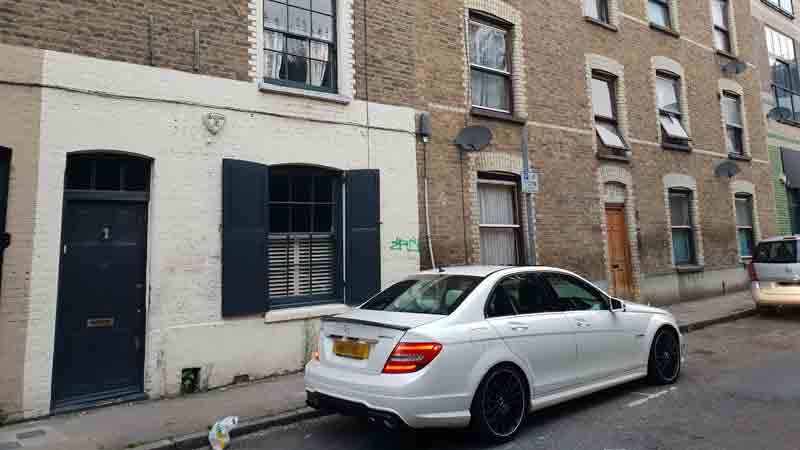
More recently, it has been connected to a very real tale- that of Mrs Kuer, who rented a room at 22 Batty Street, Whitechapel, to a man who disappeared without a trace on the night of the murder of Mary Ann Nichols, leaving behind a bloodstained shirt.
It may also be linked to a man who left a mysterious black bag behind in a London hotel around the same time, before supposedly escaping to Liverpool, where it would appear he was pursued by the Metropolitan Police.
Certainly, these developments were eagerly reported by newspapers back at the time of the murders.
Today the house at 22 Batty Street has been rebuilt, although the building next door still boasts a date of 1888 above its doorway.
The site of the original number 22 can be found towards the street’s southern end, just one street away from the former Berner Street, site of the murder of Elizabeth Stride.
9. St. George in the East mortuary building – Site of Elizabeth Stride’s post mortem
It is rare that a derelict building in London will survive for long today, before it is demolished or converted, and yet close to Shadwell underground station there remains a brick structure which has stood empty for more than seven decades, and which also has a unique, if unsavoury, place in the story of the ‘autumn of terror’.
For it was here, in the churchyard of St George in the East church on Cannon Street Road, that the body of Elizabeth Stride was brought following the discovery of her murder on 30th September 1888, and where a post-mortem examination was made on the following day, making this the only surviving mortuary building to have once housed a ‘canonical’ victim.
A scarred but visible sign above the building’s doorway still proclaims its subsequent and rather surprising use as a nature study centre between the turn of the last century and the 1940s.
Appropriately, in 2015 the adjacent church hosted a memorial service for Elizabeth and the other purported ‘Ripper’ victims, as well as a ‘pop up’ exhibition focusing on the experiences of local women during the Victorian era, an admirable attempt to reclaim the reality of their lives from simple caricature and mere context to the ill deeds of an unidentified serial killer.
10. 9 King’s Bench Walk – the legal chambers of Ripper suspect Montague John Druitt
Montague John Druitt was a graduate of Oxford University, a barrister, a noteworthy amateur cricketer and honorary secretary of the historic Blackheath Cricket Club, and a schoolteacher – at least until he was sacked, for reasons which remain mysterious, sometime in 1888.
The year is significant, as at least one senior police officer in the years following felt that Montague was also a strong suspect for no less a mantle than the true identity of ‘Jack the Ripper’.
Melville Macnaghten served as Assistant Chief Constable of the Metropolitan Police’s Criminal Investigation Department (CID) from 1889 until his promotion to Chief Constable a year later, a post he would retain until he was further elevated to Assistant Commissioner in 1903.
Although he was not even a policeman in 1888, it cannot be doubted that he would have had access to all available information on the murders. Therefore, when he wrote a report during his time as Chief Constable naming three possible suspects, his opinion carried some weight.
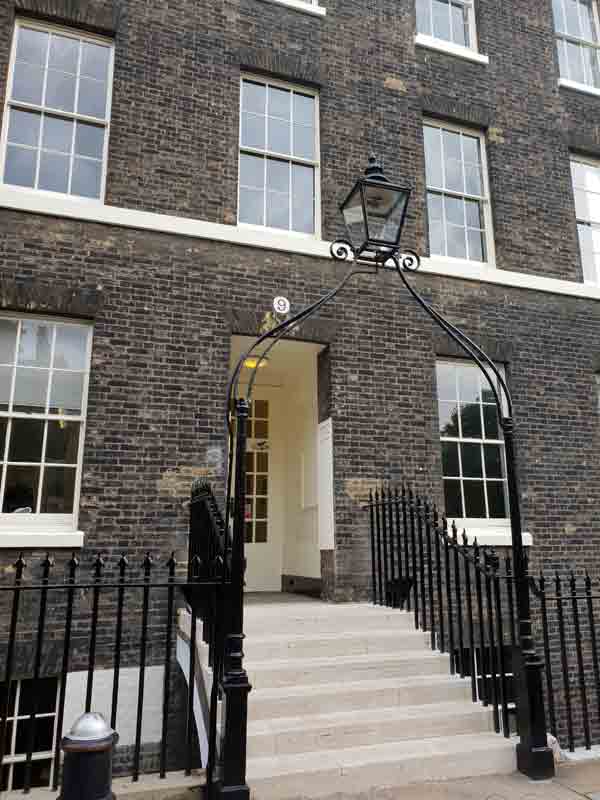
Macnaghten named a petty Russian criminal named Michael Ostrog, a supposedly insane Pole named simply Kosminski, and ‘a Mr M. J. Druitt’, since further identified as Montague, who had seemingly enjoyed a comfortable life before he was removed from his school post, and subsequently disappeared from view at the start of December 1888 (potentially, within days of the final ‘canonical’ murder, a fact which has not escaped attention).
When Montague’s brother heard that he was missing, he searched both his chambers in London’s Inner Temple (one of the four ‘Inns of Court’ to which all barristers practising in England and Wales must belong) and his lodgings.
It was at the latter that a suicide note was discovered, alluding to their mother’s longstanding mental illness – ‘since Friday I felt I was going to be like mother’. Druitt’s body was eventually pulled from the Thames on New Year’s Eve 1888, with estimates that he had been dead for around three weeks.
Whether he was indeed ‘Jack’ or not, Druitt’s name has been bound up in the ‘Ripper’ story ever since, and his former chambers – still in use by the current generation of Inner Temple barristers – can still be seen in King’s Bench Walk to this day, from the outside at least.
11. Working Lads Institute – Site of the inquests into the deaths of Mary Ann Nichols and Annie Chapman
The history of Whitechapel is tied up with the history of philanthropy, whether successful, well intentioned, or otherwise.
To give just one famous example, the Salvation Army can trace its roots to sermons given on Whitechapel Road by preacher William Booth.
Less well known is the work of the worthy men and women behind the formation, in 1885, of the Working Lads Institute, which boasted both lodgings and recreational facilities for the young men of the locality and which was soon relocated from its original home closer to the London Hospital to a property on Whitechapel Road.
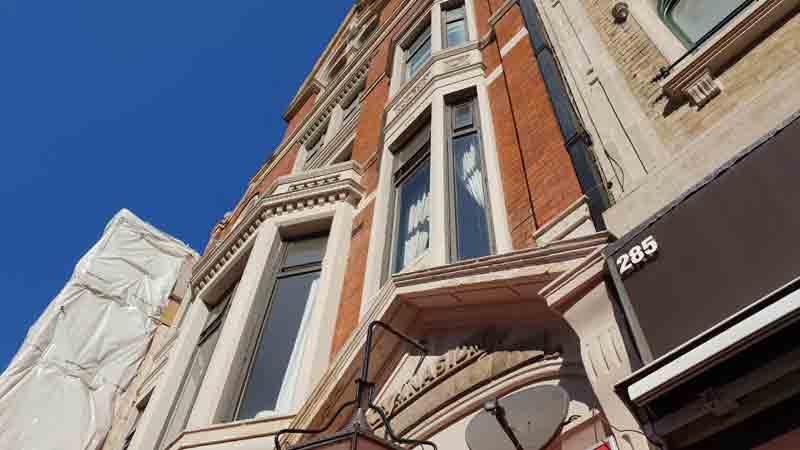
Despite these noble undertakings, the Working Lads Institute is perhaps best remembered today for its use for the inquest into the first generally accepted ‘Ripper’ murder, that of Mary Ann Nichols, an inquest opened on 1st September 1888.
The same building had also held the earlier inquest into the murder of Martha Tabram, who suffered 39 stab wounds in George Yard, Whitechapel, in the morning of 7th August 1888, at the close of which the Coroner would declare that he could not imagine a more brutal crime.
History tells us that the limits of his imagination would soon be tested. It would also be used for the inquest into the murder of Alice McKenzie, murdered close to George Yard on 16th July 1889. Both women have since been suggested as potential additional ‘Ripper’ victims.
The former Institute building can still be found on Whitechapel Road, with signage for the gymnasium and swimming baths which it once housed still visible.
12. Fashion Street – Site of the former Queen’s Head public house
Around two hours before the presumed time of death of Mary Jane Kelly, the final generally accepted victim of ‘Jack the Ripper’, a man who would later give his name to police as George Hutchinson would claim to have seen Kelly as she walked along Commercial Street, Whitechapel, and was approached by her, at which point she asked him for money.
After Hutchinson declared that he had none, he watched as Kelly was approached by another man.
For reasons which he did not divulge to the authorities, Hutchinson followed the pair to the corner of Fashion Street, where in the light of a gas lamp outside the Queen’s Head public house he took a good look at the man, whom he described as aged in his mid 30s, around 5 feet 6 inches in height, wearing an extravagant fur-lined coat, a horseshoe-shaped tie pin, boasting a heavy moustache and carrying a parcel measuring approximately eight inches in length, bound with a strap.
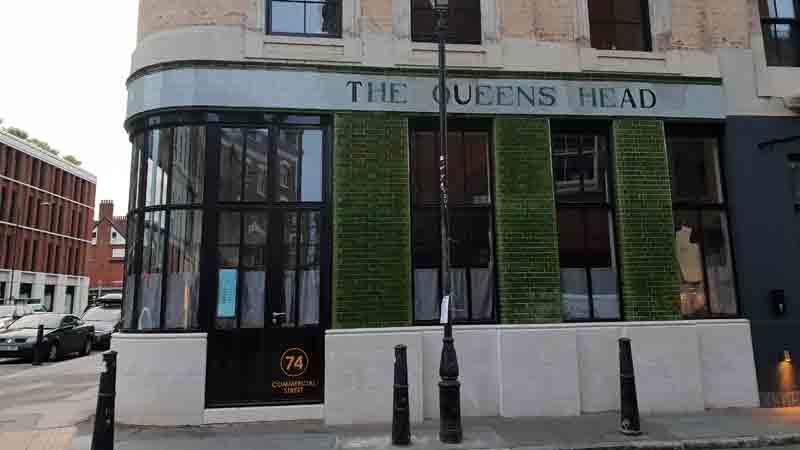
The exaggerated detail of Hutchinson’s description, especially given the available level of light, has led to understandable scepticism regarding his description ever since.
In some quarters, his behaviour has even led to his suggestion as a suspect for Kelly’s murder, and perhaps even those proceeding it.
Nevertheless, the modern-day depiction of ‘gentleman Jack’ with his elegant dress and sinister baggage, may reasonably be said to trace its genesis to the description of the man allegedly glimpsed outside the Queen’s Head.
For many years, there were no signs of the former Queen’s Head to be found.
However, recently new owners have renovated the building and restored frontage akin to that of a Victorian era public house, complete with the original name. It is unclear at this time exactly what services the premises will offer.
13. Tower of London – the site of a Ripper suspect identity parade
A curious entry to finish.
The Tower of London needs no introduction, and yet its link to the ‘autumn of terror’, or at least to the wider ‘Whitechapel Murders’ is something that is yet to make an appearance in the guidebooks.
On 7th August, 1888, 39-year old Martha Tabram was stabbed to death in George Yard, Whitechapel.
Her post-mortem examination would reveal that only one of those wounds, to her heart, had been sufficient in itself to be fatal.
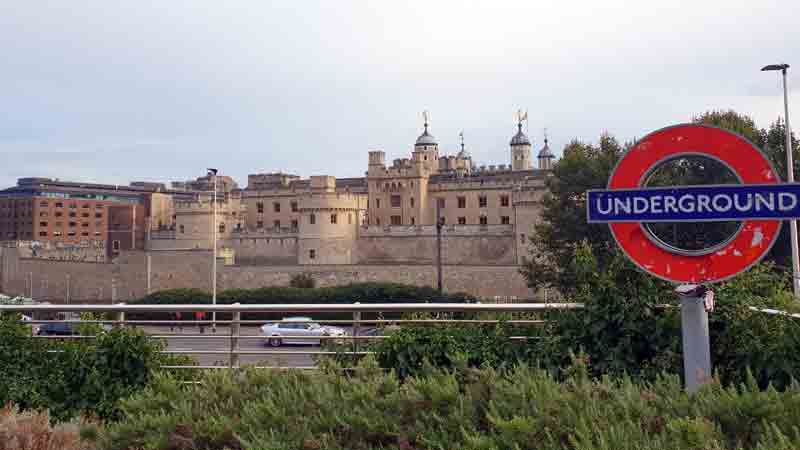
Martha had been drinking with a friend, Mary Ann Connolly, in the hours preceding her death, before the pair separated in order to make their way to more or less secluded spaces with the two men who they had met with during the night.
Connolly, who at times went by the name of ‘Pearly Poll’, would subsequently tell the police that Martha’s companion had been dressed as a soldier.
Connolly was taken to not one but two identity parades, first at the Tower of London and then at Wellington Barracks in Westminster.
Eventually, the police came to the conclusion that her story was of little use.
Today, an argument is often made to include Tabram’s death along with the five ‘canonical’ murders that soon followed. The Tower of London, of course, still stands proud.
Have you been to any of these Jack the Ripper locations? Tell us in the comments section below!


